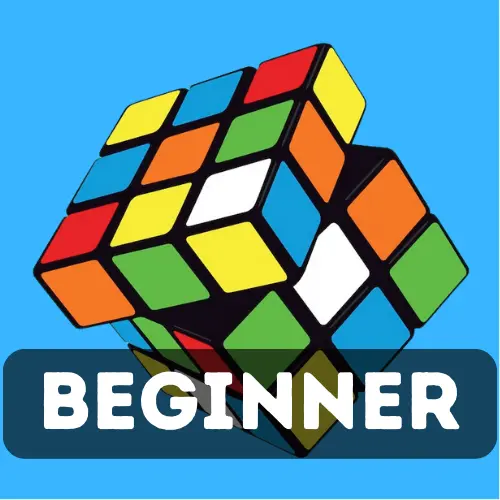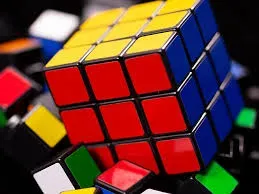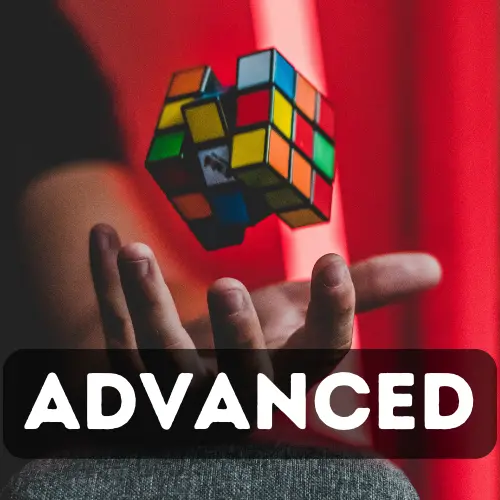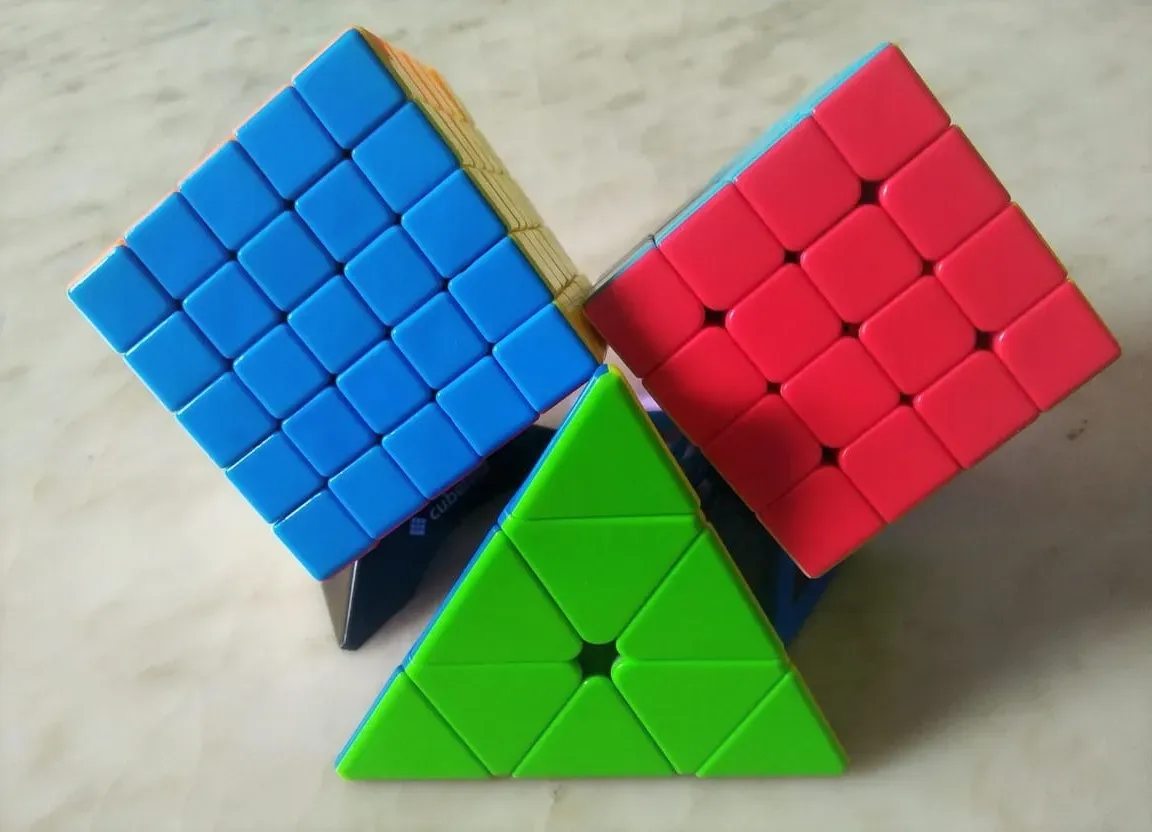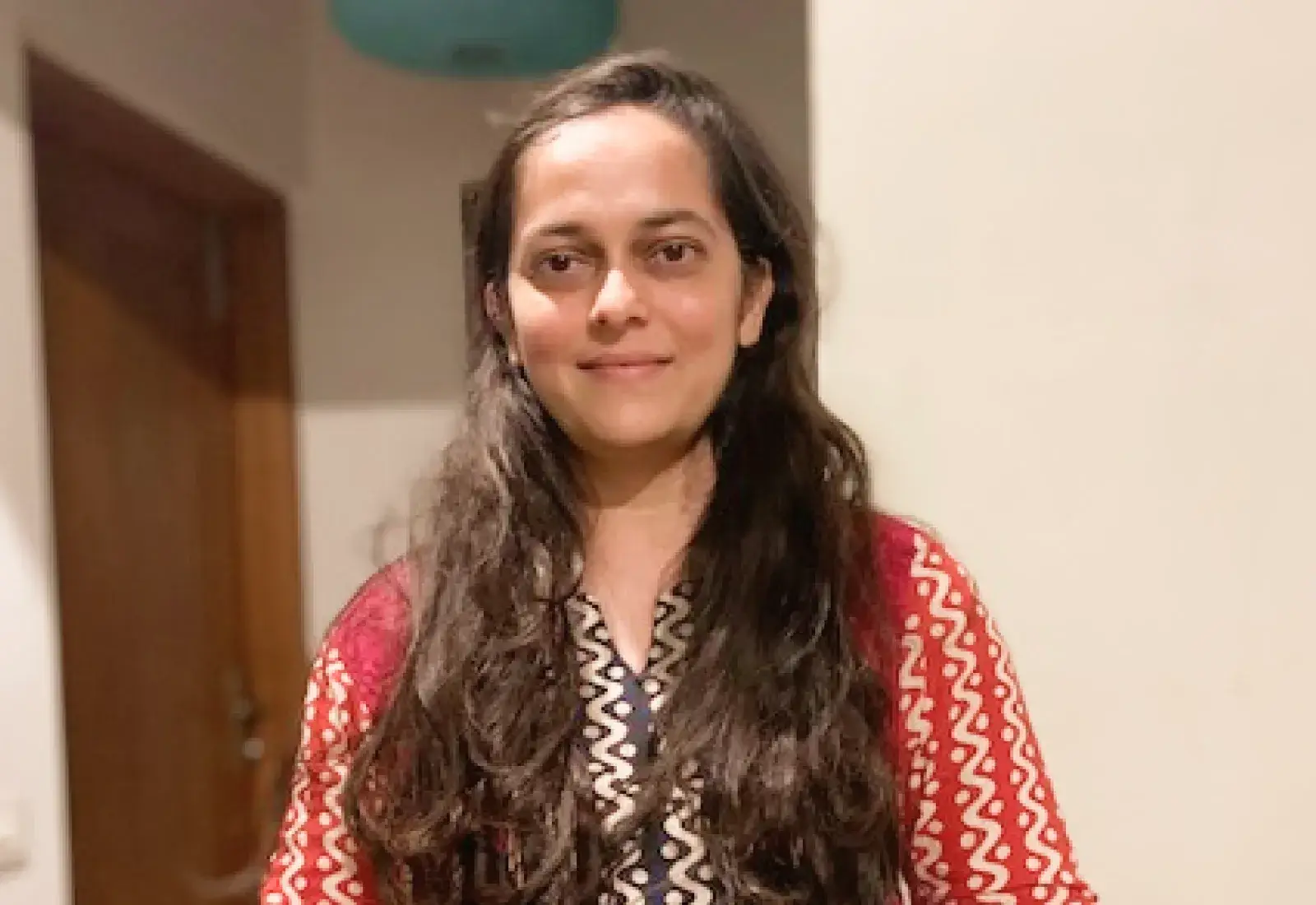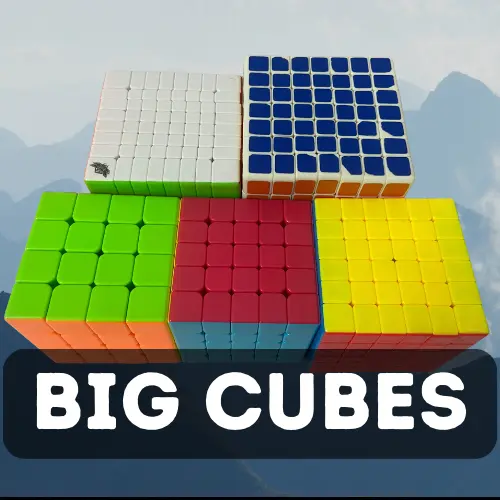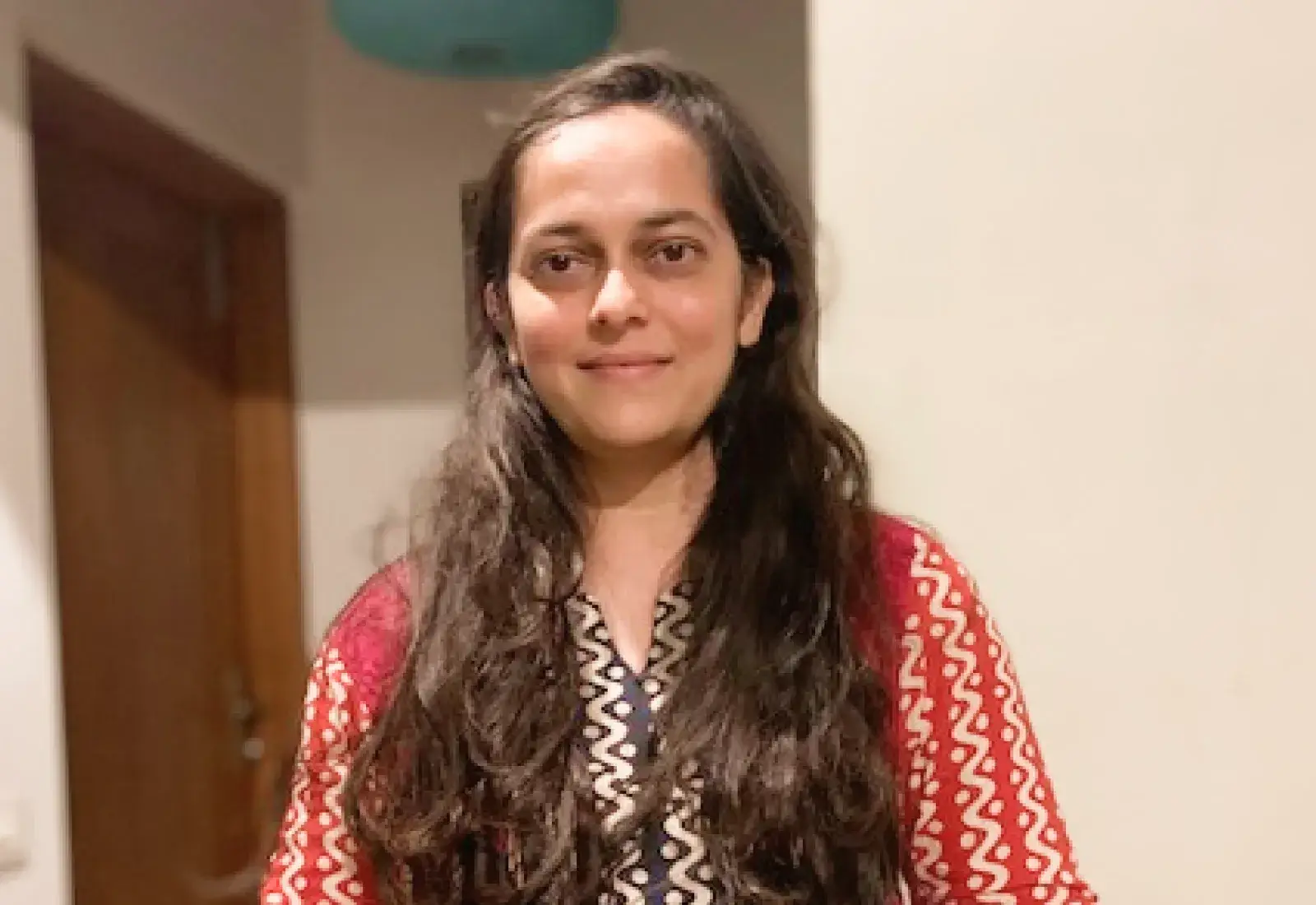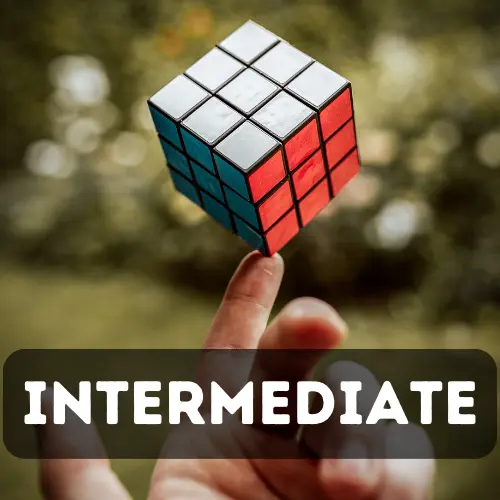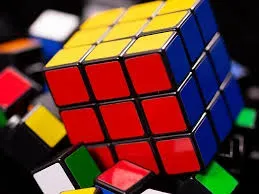Learn All About Rubik’s Cube, Its Types & Parts
What do you do when you pick up a Rubik’s cube for the first time? Apparently, it’s just a cube. Right? A cube with six colors on six sides. Each side is divided into nine squares. It has several layers that can be turned around back, forth, up, and down.
You turn the layers around a few times and all the colored boxes get scrambled. That was easy. Right? Now, you have to put it back to how it was - six sides, six colors, all boxes aligned perfectly. And this time it’s not as easy as it was to scramble it. That is how the game starts.
Invented by Erno Rubik in 1974, Rubik’s cube is intriguing, challenging, and brain-teasing for those who are still in the process of solving it. And for those who have solved the puzzle, it is a matter of accomplishment, and certainly a bit of a swag.
So the question arises - Can everybody solve Rubik’s cubes? Well, here’s the good news - Most people can solve one side of the cube. This does not quite require much knowledge of the algorithms, patterns, or permutations. But beyond that, it’s all about learning, practicing, and developing muscle memories.
But before that, there are several other things about Rubik’s cube that we need to know. How many types of Rubik’s cubes are there? Which cube should a beginner pick first? What are the different parts of Rubik’s cube? Why should we know about them?
Let’s delve deeper into it.
Types of Rubik’s Cube
There are numerous types and variations of Rubik's Cubes available, each with its unique features and challenges. These variations can include differences in size, shape, and mechanism. Some of the notable Rubik's Cube variations include -
1. 3x3 Rubik's Cube
The classic Rubik's Cube with six faces, each made up of nine smaller squares. It was invented by Ernő Rubik, a Hungarian professor of architecture, in 1974, and it was patented in 1975. Since its invention, the Rubik's Cube has gained worldwide recognition and has become a symbol of logic, problem-solving, and mental dexterity.
2. 2x2 Pocket Cube
A smaller version of the 3x3 cube with two layers on each axis. The 2x2 Rubik's Cube, often referred to as the "Pocket Cube," is a simplified version of the classic 3x3 Rubik's Cube. Despite its smaller size, the 2x2 cube still offers an engaging puzzle-solving experience.
3. 4x4 Rubik's Revenge
Also known as the "Master Cube," it is a 4x4x4 cube that introduces new challenges with its additional layers. It was invented as a follow-up variation of the 3X3 Rubik’s cube. It offers a rewarding experience for those who have mastered the classic cube and are looking for a more intricate puzzle-solving adventure. It requires a deeper understanding of cube mechanics and more algorithms, making it a favorite among avid Cubers and enthusiasts.
Likewise, 5x5 is known as the Professor's Cube. The 6X6 and 7X7 are larger cubes that are in progression from the earlier ones. They offer an even greater challenge.
4. Mirror Cube (Shape-shifting Cube)
A cube with irregularly shaped pieces that must be solved by matching their shapes rather than colors. It is also known as ‘Mirror Blocks Cube’ or ‘Bump Cube’.
The Mirror Cube has a structure similar to a 3x3 Rubik's Cube in terms of the number of layers and the concept of twisting and turning. However, its key distinction lies in the shape of its pieces.
Other Challenger’s Cubes
► Ghost Cube
A challenging variation with irregularly shaped pieces that don't have uniform colors, makes it difficult to determine the solved state.
► Pyraminx
A pyramid-shaped puzzle with faces that can be twisted and turned.
► Megaminx
A dodecahedron-shaped puzzle with 12 faces, similar to a 3x3 cube but with a different structure.
► Square-1 Cube
A cube with a unique shape-shifting mechanism, requiring both color and shape alignment.
► Skewb
A cube with eight corners that can be rotated to scramble and solve.
► Fisher Cube
A cube with additional cuts that create unique challenges.
► Void Cube
A cube with holes in the center of each face, adds complexity to the solving process.
► Axis Cube
A cube with rotation axes that aren't aligned with the center of each face, making it tricky to solve.
► Gear Cube
A cube with gears on the faces affects how the cube can be turned and solved.
► Cuboids
These are rectangular-shaped variations of the Rubik's Cube, such as the 2x3x3 and 3x3x2.
►Special Editions
Rubik's has released various special editions and themed cubes, including those featuring popular characters and designs.
The world of Rubik's Cubes is constantly evolving, with enthusiasts inventing new twists and challenges to the classic puzzle.
Know the Rubik’s Cube - Inside Out
Before we try to solve Rubik’s cube we have to first know the parts of the cube. Learning about the different parts of the cube will help to follow the instructions and memorize the patterns.
Cubies or Pieces
Cubies or pieces are the individual, smaller squares on the surface of the Rubik's Cube. There are a total of 54 cubies on a standard 3x3 Rubik's Cube. These cubies come in six different colors: white, yellow, blue, green, red, and orange. Each cubie can be moved around the cube, but it always stays attached to the cube's core.
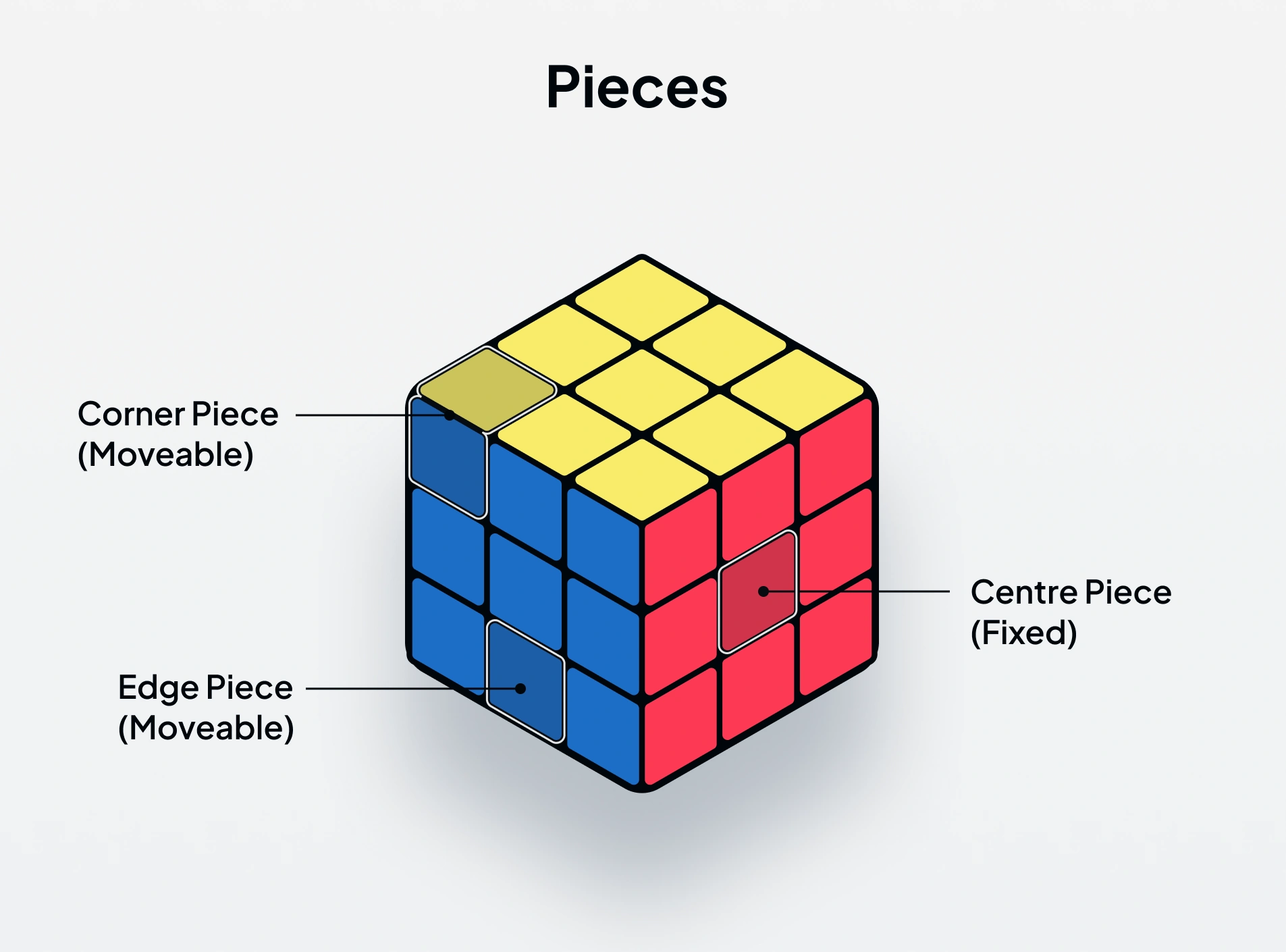
Center Pieces
The center pieces are the six squares located in the center of each face of the cube. These pieces don't move; they are fixed in place. The colors of these center pieces determine the color of each side of the cube. They act as reference points, helping you understand how the cube is supposed to look when it's solved.
Edges
Edge pieces are located along the edges of the cube. Each edge piece has two different colors, one on each of its sides. These pieces can be twisted or flipped to change their orientation and the colors they display. Solving the Rubik's Cube involves arranging the edge pieces so that each one matches the colors of the adjacent center pieces.
Corners
Corner pieces are positioned at the corners of the cube. There are 8 corner pieces. They have three different colors, with each color on a different side of the piece. Like edge pieces, corner pieces can also be twisted and turned to rearrange their colors. Solving the cube requires correctly positioning these corner pieces so that each corner matches the colors of the adjacent center pieces.
The challenge of solving a Rubik's Cube lies in manipulating the edge and corner pieces while keeping the center pieces fixed in their proper places. By twisting and turning the cube's layers, you work to align all the pieces so that each side of the cube has a single, solid color. It's a complex and brain-teasing puzzle that requires logic, strategy, and patience to master.
Faces of Rubik’s Cube
► Front Face
The front face is the side you see when you look at the cube head-on. It's usually the first face people try to solve. The center square of the front face is called the "front center" and serves as a reference point for the colors on this face.
► Back Face
The back face is opposite the front face, so you can't see it when you're looking at the cube from the front. Like the front face, it also has a "back center" square. To solve the cube, you need to align the colors of the back face with those of the other faces.
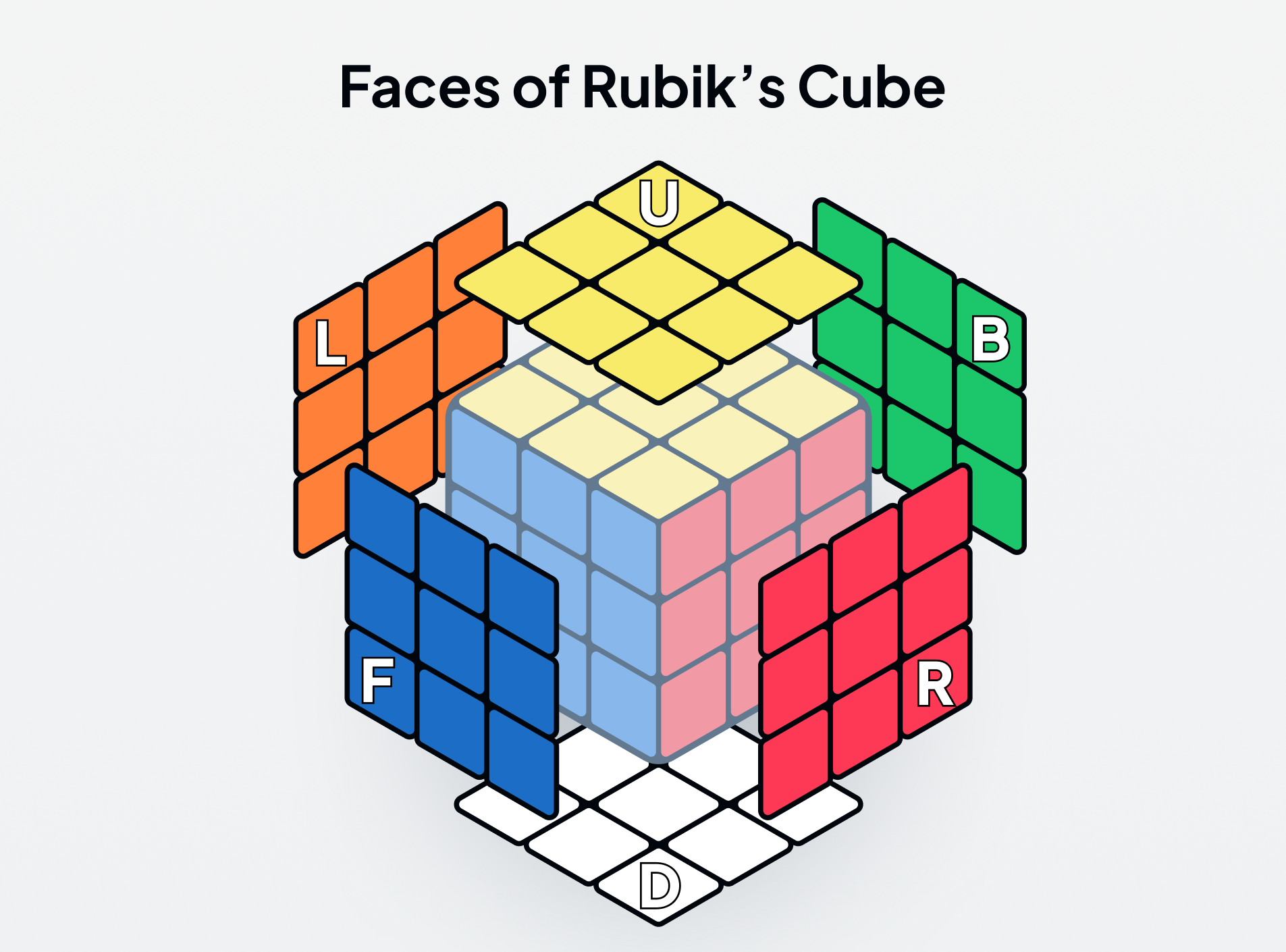
► Left Face
The left face is on the cube's left side when looking at it from the front. It has a "left center" square. Turning this face involves rotating the left column of pieces.
► Right Face
The right face is on the cube's right side. It has a "right center" square. Turning this face involves rotating the right column of pieces.
► Top Face (or Up Face)
The top face is on the cube's upper side. It has a "top center" square. Turning this face involves rotating the top row of pieces.
► Bottom Face (or Down Face)
The bottom face is on the cube's lower side. It has a "bottom center" square. Turning this face involves rotating the bottom row of pieces.
Each face is covered with smaller pieces, and the goal of solving the Rubik's Cube is to arrange these smaller pieces so that each face has a single, solid color. To do this, you'll need to twist and turn the cube's faces in different directions to mix up the colors initially and then work to solve it by returning each face to its solid color state. It's a fun and challenging puzzle that requires careful thinking and strategy!
Layers
The Rubik's Cube consists of three main layers, which are like stacked sections of the cube. Understanding these layers is crucial when solving the puzzle.
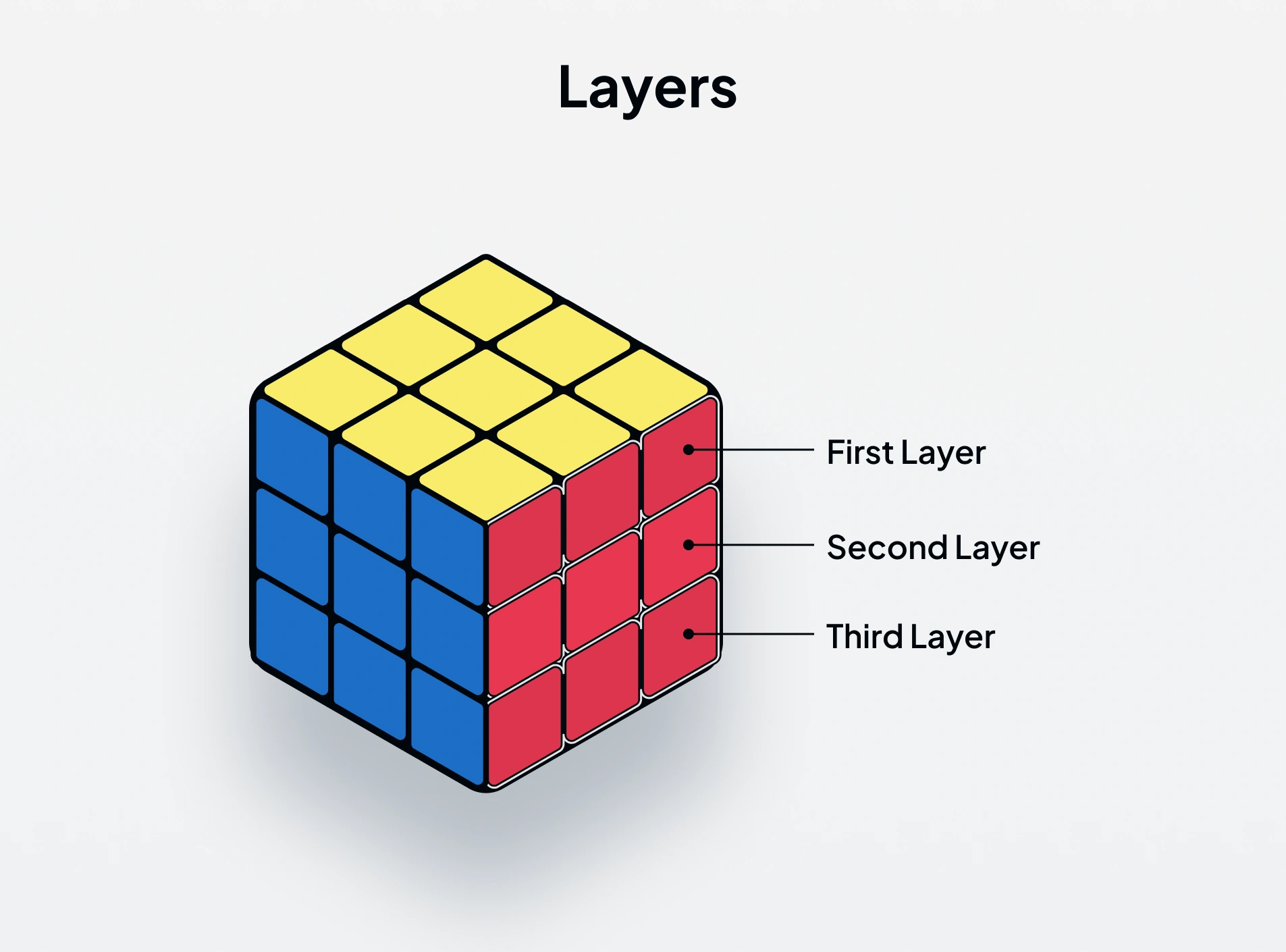
Here's a breakdown of the Rubik's Cube layers:
► Top Layer
The top layer, also known as the "up" face, is the layer at the very top of the cube. It consists of the nine smaller pieces on the top face of the cube. The center square of the top layer, known as the "top center," has a fixed color that determines the color of the entire top layer. Solving the top layer involves aligning all the smaller cubies on this layer so that each side matches the color of the top center.
► Middle Layer
The middle layer is sandwiched between the top and bottom layers. It consists of nine pieces that connect the top and bottom layers. This layer doesn't have a center square like the top and bottom layers, so you must rely on the adjacent top and bottom layers to determine the correct colors for the middle layer pieces. Solving the middle layer involves correctly positioning these pieces to match the colors of the adjacent top and bottom layers.
► Bottom Layer
The bottom layer, also known as the "down" face, is at the bottom of the cube. Similar to the top layer, it consists of nine smaller pieces on the bottom face of the cube. The center square of the bottom layer, known as the "bottom center," has a fixed color that determines the color of the entire bottom layer. Solving the bottom layer means arranging all the pieces on this layer so that each side matches the color of the bottom center.
When solving the Rubik's Cube, you manipulate these layers by rotating them independently or in combination. The ultimate goal is to have each of the six faces (front, back, left, right, top, and bottom) display a single, solid color. To achieve this, you need to consider the effects of your moves on the different layers and work methodically to align the colors throughout the entire cube. It's a challenging and rewarding puzzle that requires both logic and spatial reasoning.
Conclusion
There are several benefits of the Rubik’s Cube that prove to be immensely beneficial for cubers of all age groups. It enhances spatial awareness and problem-solving skills. It increases patience, persistence, and memory power. It is a good stress buster and also enhances creative thinking skills. Overall, solving the cube offers cognitive, educational, and personal advantages, making it an enjoyable and rewarding activity.
It is not easy to solve Rubik’s Cubes. However, it’s extremely intriguing. Even if you are unable to solve it, you find it difficult to put it down.
If you can’t solve the Rubik’s cube, you can learn it from the experts by exploring Rubik’s Cube Classes Online.


